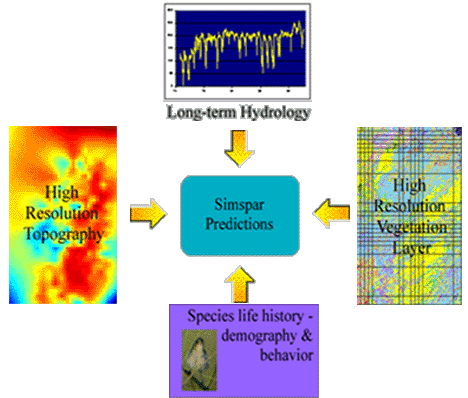
The Cape Sable seaside sparrow, Ammodramus maritimus mirabilis, a federally listed endangered species, occurs in the short-hydroperiod marl prairies of Everglades National Park and Big Cypress National Preserve in Southern Florida. The sparrow 's breeding habitat represents an extremely dynamic portion of the Everglades ecosystem. The dominance of graminoid species important for the successful breeding of the sparrow is controlled by hydroperiod as well as fire return-interval which, in turn, influences the population dynamics of this species. Recently, due to high rainfall years, the sparrow population has been in decline.
SIMSPAR, an individual based model for the Cape Sable seaside sparrow, provides estimates of effects of alternative water and land management scenarios on the spatial and temporal distribution of the sparrow's population. It provides a continuous, spatially explicit estimate of population sizes and structure by tracking individual sparrows across the landscape. Each sparrow's sex, age, location and reproductive status are tracked on a daily time step during the breeding season. Each sparrow moves across the landscape and makes daily decisions regarding its behavior depending on abiotic factors as well as interactions with other individuals.

Click on the image above or first row of links below to see details of each layer of the model
SIMSPAR consists of a number of modules that determine both the sparrow's behavior and breeding success as it moves across the landscape. Behavioral rules and the values of ecological and life cycle parameters are based on direct field observatons. The landscape in which the sparrow moves consists of a multitude of layers encompassing the topography, hydrology, and vegetation of the Everglades. SIMSPAR uses knowledge of both the biology of the species and its landscape to predict the Cape Sable seaside sparrow's population response to changes in hydrology and vegetation.